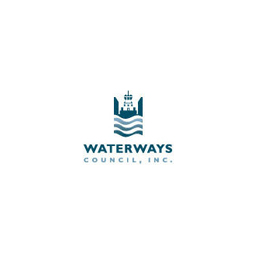“The secret of getting ahead is getting started.”
— Mark Twain
THE ART OF LEADERSHIP
Launch, Lead, Laugh
Twain Urges Leaders To Quit Waiting And Begin
Folks keep hunting for the perfect morning, clear skies, wind at their backs, angels tuning trumpets before they put a boot on the road. That’s a pleasant fiction, as useful as a screen door on a submarine. The Mississippi never waited on anybody’s permission to flow, and progress behaves the same.
I found it wiser to start the raft with crooked boards than to plan marble decks by candlelight forever. Motion, even sloppy motion, shakes loose ideas you can’t bump into while seated. Once wheels turn, people appear, tools emerge, and the map draws itself quicker than any committee. Success prefers the sound of hammers to that of harps.
So hitch up your prospects, strike a match, and see what catches. The worst that happens is smoke; the best is supper. Rivers carve canyons by simply refusing to stop. Leadership isn’t a brass title; it’s being first to muddy your boots so others know the path is shallow enough to cross, nonsense and all.
Begin one daunting task immediately, accept imperfections, and inspire momentum in others.
Receive Honest News Today
Join over 4 million Americans who start their day with 1440 – your daily digest for unbiased, fact-centric news. From politics to sports, we cover it all by analyzing over 100 sources. Our concise, 5-minute read lands in your inbox each morning at no cost. Experience news without the noise; let 1440 help you make up your own mind. Sign up now and invite your friends and family to be part of the informed.
COMMERCIAL CONSTRUCTION
Timber Jets Terminal Takes Off
Denver International breaks ground on carbon‑sequestering timber satellite concourse project.
Snow swept across the Front Range Monday as Denver International Airport officials and union carpenters raised the first cross‑laminated timber column for Concourse H, a $780‑million satellite linked by an automated people mover. The groundbreaking marks the nation’s most extensive use of mass timber in aviation and addresses the need for increased capacity prompted by post-pandemic travel rebounds.
Designed by SOM and Colorado’s own Studio NYL, the airy, 12-gate structure will sequester 6,000 tons of carbon while shaving eight months off the typical steel schedule through panelized off-site fabrication. Electrochromic glazing, rooftop photovoltaics, and geothermal wells aim to deliver net-zero energy performance despite mile-high temperature swings and the concourse’s round-the-clock operations, as well as maintaining acoustic comfort.
General contractor Hensel Phelps projects 900 construction jobs at peak, including apprentices recruited from Denver Public Schools’ new timber technology pathway. Upon opening in early 2028, Concourse H will accommodate ten million additional passengers annually, inject $400 million into regional economic activity, and demonstrate how airports can decarbonize heavy infrastructure without sacrificing capacity.
INFRASTRUCTURE INDUSTRY
Mississippi River Lock Expansion
Ground Breaks On 1200‑Foot Lock 25 Upgrade For Grain Barges
Backhoes clanged Tuesday at Winfield, Missouri, as the Army Corps and farm‑state lawmakers broke ground on the first Navigation and Ecosystem Sustainability Program lock expansion. Crews drove ceremonial pilings to start a 1,200‑foot companion chamber at Lock 25, set to quadruple grain barge throughput on the Mississippi.
The $1.1 billion design-build contract recently awarded to Massman-Ames-Kiewit begins with sheet-pile cofferdams, rock sockets, and a bypass channel, allowing the existing 600-foot lockages to remain operational. Two gantry cranes will place 400 precast monoliths, cast onsite with low-carbon cement. Towboats will ferry aggregate, trimming truck trips through fragile mussel beds.
Funding draws on IIJA inland‑waterway allocations, user‑financed barge diesel taxes, and an unprecedented $50 million state cost share jointly committed by Illinois and Missouri last week. The Corps estimates that the project will support 1,700 construction jobs and reduce average lockage delays from two hours to thirty minutes when the chamber opens in 2031. Environmental components include island habitat restoration, fish-pass channels, and telemetry arrays that track the behavior of sturgeon.
RESIDENTIAL RESEARCH
Bamboo Beams Break Building Norms
Hawaii Certifies Laminated Bamboo Frames, Slashing Coastal Home Construction Emissions
Hawaii’s Building Code Council voted unanimously Tuesday to allow structural glue‑laminated bamboo beams and studs in single‑family dwellings statewide, referencing a brand‑new appendix to the 2024 International Residential Code. The change, published June 26, takes effect July 8, ending years of project‑by‑project waivers and marking the first statewide adoption of bamboo framing in the United States.
Honolulu developer PacificEco Homes immediately swapped the framing package on its 28-lot Kailua subdivision, reporting an average materials premium of $1,180, yet cutting wall assembly time by two days because lighter members are easier to lift by hand and arrive pre-sanded. University of Hawaiʻi engineers present at a live load test recorded 12 % higher bending strength than Southern‑pine studs and found moisture expansion negligible after 30 freeze‑thaw cycles in an environmental chamber.
The Bank of Hawaii stated that buyers qualify for Sustainable Materials mortgage credits, which reduce the interest rate by 0.125 percentage points. State Farm forecasts insurance discounts because termites avoid treated bamboo. Analysts expect California and Florida to follow Hawaii’s lead within six months.
TOOLBOX TALK
The Importance of Safe Storage and Handling of Oxygen Cylinders
Introduction
Good morning, Team! Today’s toolbox talk covers safe storage and handling of oxygen cylinders. Oxygen cylinders, if mishandled, pose serious fire and explosion hazards.
Why It Matters
Improper handling or storage can cause dangerous explosions or fires, leading to severe injuries or fatalities.
Strategies for Safe Oxygen Cylinder Handling
Proper Storage:
Store oxygen cylinders upright, secured with chains or racks, away from flammable gases.
Clear Labeling:
Clearly label and separate oxygen cylinders from other compressed gases.
Inspect Regularly:
Frequently inspect cylinders and valves for leaks, damage, or corrosion.
Avoid Contaminants:
Never use oil, grease, or dirty hands when handling oxygen cylinders.
Use Proper PPE:
Always wear safety gloves and glasses when handling cylinders.
Discussion Questions
Have you witnessed incidents involving oxygen cylinders?
How can we improve oxygen cylinder safety practices?
Conclusion
Proper storage, handling, and inspection of oxygen cylinders are crucial to ensure the safety of everyone on site.
Handle oxygen safely, stay protected!








